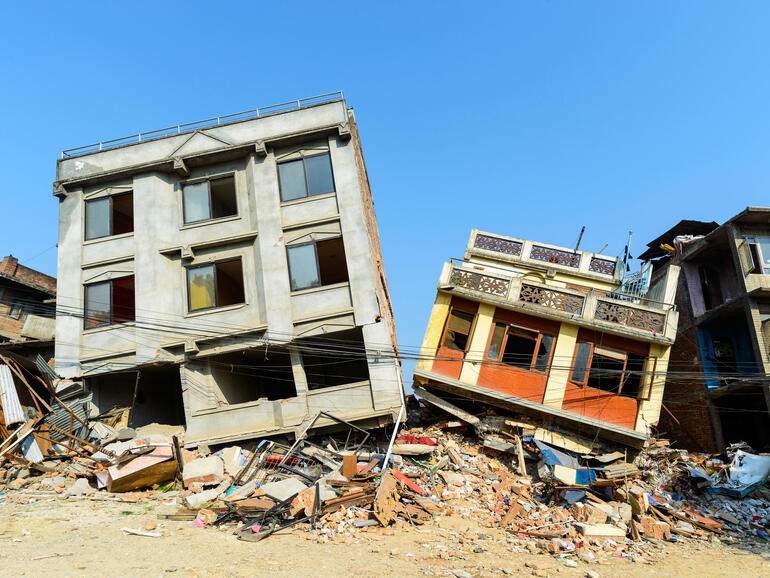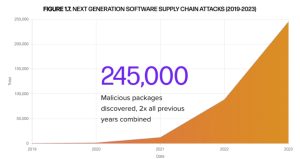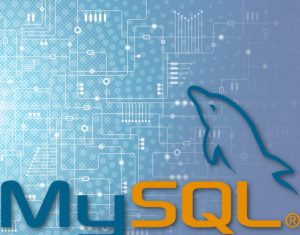As sensors are deployed around the globe, the open-source project aims to improve current earthquake detection and alert systems and using machine learning and other technologies.

Image: iStock/dutourdumonde
In the US alone, nearly half of the population lives in areas prone to potentially damaging shaking during an earthquake, according to the United States Geological Survey (USGS). Worldwide, populations in at-risk seismic areas have increased exponentially in recent decades. To give people time to protect themselves from seismic events, some countries have constructed intricate earthquake early warning (EEW) systems.
Once such a network detects an earthquake and dispatches an alert, giving people time to move to a safer location. However, constructing (EEW) systems is an expensive undertaking. Japan’s early warning system cost an estimated $1 billion to construct. Building such a system for the US West Coast would cost nearly $40 million, with maintenance and operations costs totaling more than $16 million annually, per reports.
A new open-source seismology project known as OpenEEW is taking an innovative approach to traditional seismic monitoring and alert systems. With support from IBM, the Linux Foundation, and others, OpenEEW is focused on creating a network of sensors to aid fast and affordable earthquake response around the globe.
A seismic shift in earthquake monitoring
Since early 2018, the software and hardware company Grillo has used its EEW system in Chile and Mexico to monitor seismic activity and transmit alerts. Using Grillo sensors, cloud-based algorithms are fed raw accelerometer data to monitor seismic activity. If an earthquake is detected, an alert is dispatched through Twitter and the Grillo app.
Recent progress in IoT technologies, cloud solutions, and more, have allowed Grillo to cost-effectively deploy alternatives to standard EEW technologies. As a result, Grillo is able to leverage more cost-effective seismic sensors than researchers typically deploy for earthquake monitoring.
“In the case of the West Coast of the US, they actually are using laboratory grade seismometers that cost $20,000 and upwards and that’s because the people in charge are seismologists who use these for research as well. In our case, we don’t care about the magnitude-two earthquakes, we just want the five, sixes and sevens, so we have much dumber sensors but they do the job very well,” said founder of Grillo, Andres Meira.
SEE: TechRepublic Premium editorial calendar: IT policies, checklists, toolkits, and research for download (TechRepublic Premium)
Using algorithms to filter out noise in the data
Earthquake monitoring involves sifting through a vast amount of data and ambient noise to pinpoint seismic activity. Rather than situating these sensors in more rural areas surrounding cities to ensure clean readings, Grillo has positioned these components in buildings throughout urban environments, leveraging various algorithmic programs in the cloud to filter out the din of the city.
“We’ve got really good algorithms that filter out noise, so people walking by, doors slamming, cars driving past. We know those are not earthquakes in our software, and that’s a big deal because the other examples around the world, they look for these very clean sites where they don’t have any ambient noise. We don’t care much about that,” Meira said.
Once one station confirms a potential earthquake amid the noise of an urban environment, the system waits for other systems to validate the earthquake, reducing the risk of false-positive according to Meira. However, Meira also discussed using machine learning to enable earthquake confirmation based on one site’s readings rather than waiting for confirmation from nearby sensors.
Open-source seismic monitoring
Even the multi-million dollar seismic monitoring events can be designed with their own set of inherent flaws and potential blindspots. A national system is reliant on the economic, political, and social factors of a particular government; as Meira, pointed out, “earthquakes don’t respect boundaries, political boundaries.”
“In the case of Mexico, earthquakes in Guatemala affect Chiapas in the south of Mexico. Again, in the north of Mexico, earthquakes in California affect Mexico and earthquakes in Mexico affect California,” Meira said.
Unlike a national seismic platform, the team’s open-source EEW project is designed to create a global partnership rather than a nationalized network, allowing people around the globe to deploy these systems in their communities as part of a larger humanitarian patchwork of sensors.
“The thing here is that any system that’s national, run by a government, is not going to be able to help other people. So you’re actually blind [to] some of the events that are [a] risk for you. So the idea of Open EEW is it’s allowing the systems to be done on a sort of citizen basis where people can just deploy their own networks and everybody helps each other out here,” Meira said.
IBM has two sensors deployed in Puerto Rico, one in the northeast of the island and the other in the southwest corner, according to Krook. On Thursday, Aug. 6, The night before our interview, Daniel Krook, CTO of IBM’s Call For Code Program, said the seismic system had detected shaking as an earthquake hit the island, with the alert being transmitted via Twitter.
“We can compare the two locations to see how the shaking travels and we were also able to see that actually plotted. Last night in Puerto Rico there was a 4.8 magnitude earthquake and to see that already working its way through the technology and the sensors we deployed in partnership with Grillo is really exciting,” Krook said.
SEE: Inside UPS: The logistics company’s never-ending digital transformation (free PDF) (TechRepublic)
Global Call for Code Challenge and collaboration
OpenEEW follows up on previous IBM “tech-for-good” initiatives like the Call for Code Global Challenge. In 2018, Project OWL won the Call for Code challenge. The cloud-based tool is designed to facilitate communication and logistical support during disaster scenarios.
Project OWL uses “DuckLinks” (a mesh network of Internet of Things IoT components) to enhance communication between people and first responders during disasters. Interestingly enough, there could be potential overlap between Project OWL and OpenEEW.
“What Project Owl has done that could be complementary with Open EEW is that currently the Open EEW requires an Ethernet cable or WiFi. So Project Owl has solved those problems through batteries, solar power, as well as long range radio, LoRa. So there’s potential ways for the two projects to collaborate on a common platform, which is really exciting,” Krook said.
Also see
Source of Article



